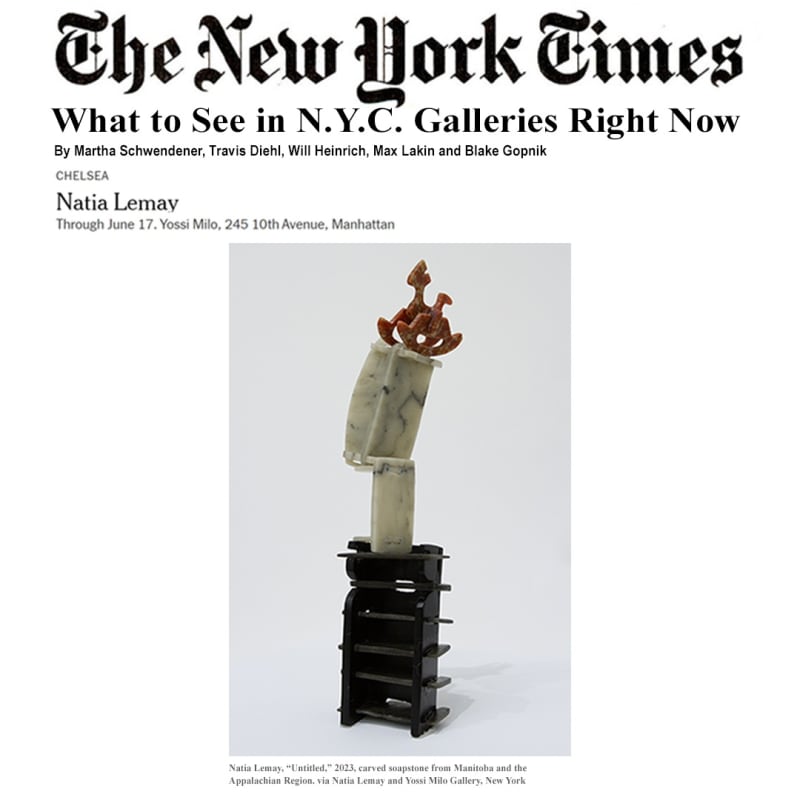Three tiny sculptures, each less than 10 inches tall, fill all the psychic room in Natia Lemay’s solo at Yossi Milo.
She stacks up miniature versions of banal furnishings — a chair, a sofa, a rocking horse — glued one on top of the other. Carved from soapstone, they copy the crude softwood miniatures that kids build from dollhouse kits.
Lemay was born into hardship in Toronto, with roots in African-Canadian culture and among the Mi’kmaq peoples of Canada’s East Coast. Her generic home goods seem to commemorate the rough years she spent moving between public housing, homeless shelters and low-end rentals. I think of her sculptures as “memory towers,” and their diminutive scale seems to concentrate their energies rather than diminish them. (Don’t memories always feel small — small enough to fit into a skull?)
Lemay links her towers to the Native art of the totem pole, which makes sense in terms of their form and mnemonic function.
The soapstone she uses, some of which came to her from her father, also recalls Indigenous crafts. Using that material to render the troubled urban world she has known, Lemay claims it as her continuing birthright. She reclaims it from the decades it has spent in the tourist trade.
There are also 20 oil paintings in Lemay’s show. To me, they accept the authority of the old master tradition rather than pushing back against it. But then, I feel that way about most recent painting. Lemay’s terrific little sculptures seem more like hand grenades, primed to blow a hole in our hierarchies. BLAKE GOPNIK

